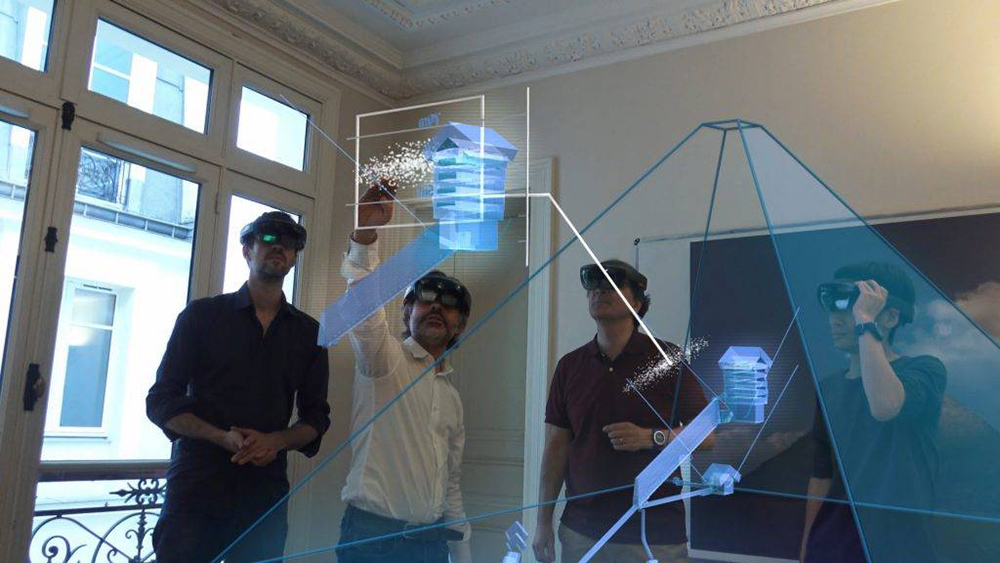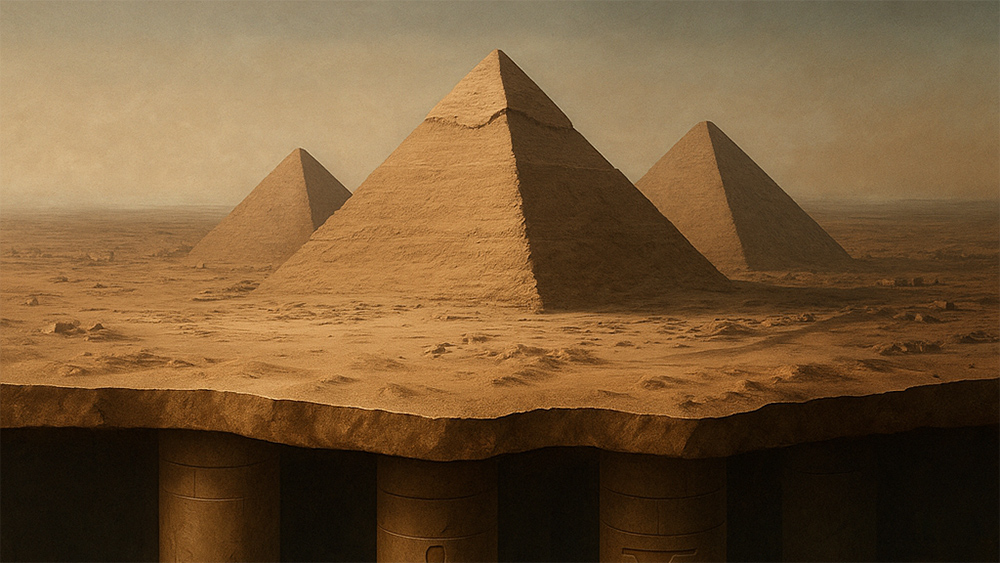A new wave of interest in Egypt’s ancient civilization surged in the spring of 2025, following claims by a group of Italian researchers. They alleged that, using radar technology, they had discovered a vast underground complex as deep as 1,200 meters beneath the pyramids of Giza.
News outlets ran with sensational headlines: “Massive Underground City Discovered,” “A Revolution in Archaeology,” “The Lost Civilization Returns,” and “A Discovery That Could Rewrite History.”
The desire to uncover something hidden and mysterious beneath the pyramids has existed for as long as the pyramids themselves. Over the years, theories about ancient treasure chambers, underground libraries, and even forgotten civilizations have emerged. Some of these ideas have been fueled by fundamental discoveries—cavities, shafts, and ancient engineering structures. But more often, such claims have turned out to be either scientific errors or deliberate exaggerations to generate buzz.
There had long been a pressing need in archaeology for more precise and reliable research methods—tools capable of separating actual data from speculation and fantasy. These methods arrived in the second half of the 20th century with the rise of new technologies, ushering in a new era in studying the pyramids and the Giza Plateau. Researchers gained access to ground-penetrating radar, seismic surveys, and the first robotic systems. These tools made it possible to gather new data with a high degree of scientific reliability.
Scanners and Robots: The First Steps of Scientific Archaeology
One of the first large-scale technological efforts was a collaboration in the 1970s between Stanford University and the Egyptian Antiquities Organization. Scientists used seismic-acoustic scanning around the Great Sphinx to detect anomalies in the underground structure. The results provided the first evidence of hidden cavities not connected to known tunnels or external entrances.
In the 1990s, a Japanese team from Waseda University, led by Professor Sakuji Yoshimura, conducted a comprehensive survey using next-generation ground-penetrating radar. Their work focused on the area around the Great Sphinx. The scanning helped identify underground voids and map the bedrock geometry without the need for invasive methods.
Perhaps the most well-known episode of this era was the mission led by German engineer Rudolf Gantenbrink. In 1993, he developed a miniature robot called UPUAUT-2, which ventured into the narrow shafts inside the Great Pyramid of Khufu. The robot traveled roughly 60 meters through a previously inaccessible channel and discovered a limestone slab with copper fittings—a mysterious “door,” behind which another similar barrier was later found.
These investigations did not result in sensational discoveries, but they were essential as proof of the effectiveness of new methods and laid the foundation for future, more accurate research.
Muons, 3D, and Supercomputers: A Scientific Revolution in the 21st Century

ScanPyramids team members use augmented reality technology to visualize hidden structures inside the Great Pyramid of Giza. © HIP Institute / ScanPyramids
A real leap forward came in the 21st century, when not only engineers but also particle physicists joined the field of archaeology. In 2015, the large-scale international ScanPyramids project launched in Egypt, bringing together experts from Egypt, France, Japan, and Germany. The central technology was muon tomography—a method borrowed from nuclear physics.
Cosmic muons—elementary particles created when cosmic rays collide with Earth’s atmosphere—can penetrate dense materials, losing energy as they go. Special detectors record their behavior. The thicker the material, the fewer particles reach the sensors. This allows researchers to “x-ray” the structure and identify hidden voids.
The scanning of the Great Pyramid of Khufu took over two years. During that time, detectors collected millions of particle traces, and the data was processed using supercomputers and 3D modeling. Each model layer was cross-verified dozens of times to rule out errors.
The result was a sensational but scientifically grounded discovery: the so-called “Big Void,” a previously unknown space about 30 meters long located above the pyramid’s Grand Gallery. A “Small Void” was later identified—much smaller but equally intriguing in purpose.
Importantly, there is no access to these voids. Since the pyramid was built, no one has entered it for 4,500 years. Today, new miniature robots are being developed to safely explore these areas and help answer the question of their intended function.
Archaeology of the Future or a Hunt for Sensation?
In spring 2025, media attention once again turned to the Giza Plateau—this time not due to peer-reviewed publications, but because of a bold claim by a team of Italian researchers. Led by biochemist Corrado Malanga, the group announced the discovery of a massive underground complex allegedly located more than 1,200 meters beneath the pyramids. According to their report, this included eight vertical cylinders up to 640 meters deep and other structures stretching beyond a full kilometer underground.
Despite media buzz and public fascination, the study itself puzzled the scientific community. The publication lacked technical detail: no data was provided on methodology, and the terminology used resembled pseudoscientific jargon more than academic language. Their findings were never submitted to any reputable peer-reviewed journal—apparently because the researchers couldn’t find scientific reviewers willing to validate or even assess the legitimacy of their claims.
Technical aspects also raised red flags. Experts in radar imaging pointed out that the scanning capabilities described in the report are impossible according to modern science. Professor Lawrence Conyers of the University of Denver, one of the world’s leading ground-penetrating radar experts, explained that today’s radar pulses can’t penetrate more than 30–40 meters with usable resolution, let alone kilometers. Even if signals did reflect from such depths, they could never produce a clear image of the shape or geometry of an object.
There were also serious geological inconsistencies. The geology of the Giza Plateau is well understood. The limestone beneath the pyramids is a soft, porous rock that cannot support cavities at the depths described by Malanga’s team. If such large voids existed, the ground would have collapsed under its weight. Such cavities are only possible in rock with entirely different properties, like granite.
Under the Rubble of Headlines
The problem with such sensational claims isn’t just the lack of evidence—they undermine public trust in real scientific research. It’s no exaggeration to say that the Giza Plateau is one of the most thoroughly studied archaeological sites on Earth. Over the past century, archaeologists, engineers, geologists, chemists, and physicists have conducted extensive investigations using cutting-edge technologies: ground-penetrating radar, seismic scanning, infrared thermography, satellite imaging, muon tomography, 3D scanning, and robotic systems.
True discoveries are not born from flashy announcements. They come from years of patient, interdisciplinary work grounded in scientific analysis and rigorous data verification. When fantasies are presented as facts and the language of science is used without its method, we don’t move closer to understanding the past—we lose our grip on reality. The Great Pyramids of Giza need no embellishment—they are already a towering achievement of the ancient world that we continue to explore anew with the most advanced tools of the 21st century.






